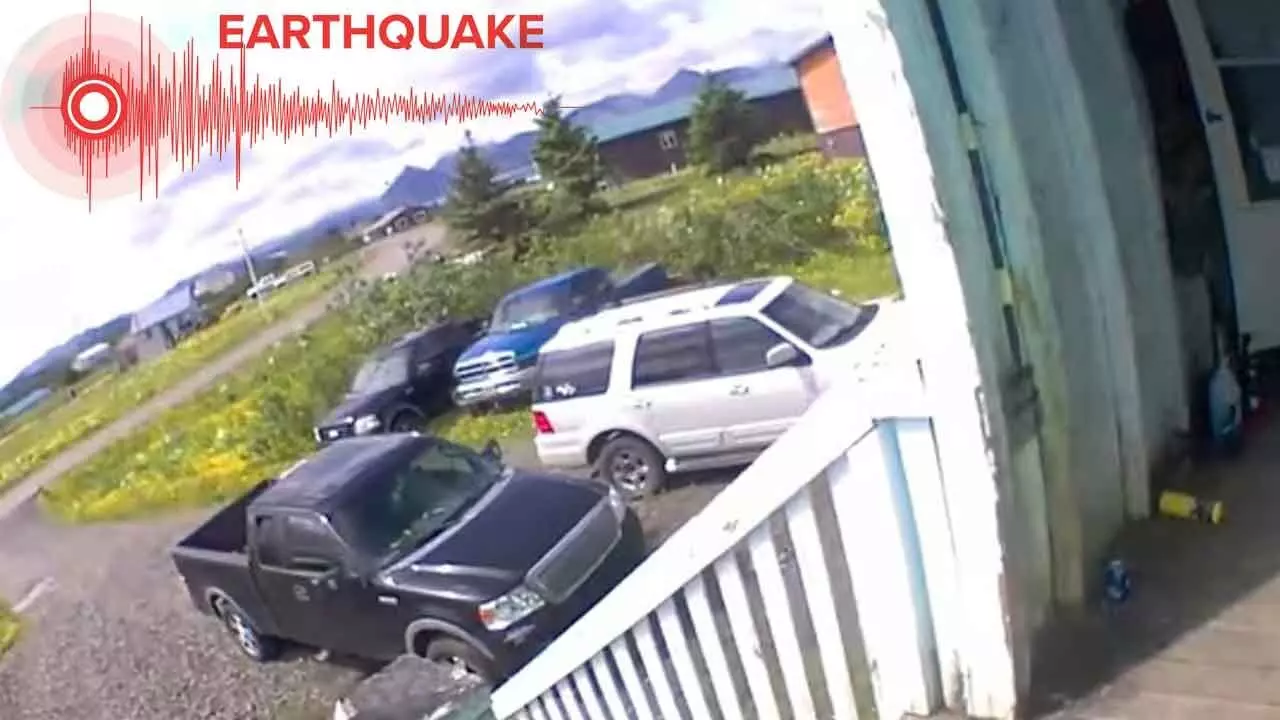
Alaska Quake Terror: Dramatic Video Reveals Violent Shaking as Tsunami Scare Grips Southern Peninsula
Witness the terrifying power of Alaska's 7.3-magnitude earthquake through a viral video showing homes and cars violently shaking. Learn how a tsunami warning sparked evacuations before being thankfully canceled.
A chilling six-second video has emerged online, offering a visceral glimpse into the sheer force of the 7.3-magnitude earthquake that rocked Alaska's southern peninsula on Wednesday. The terrifying footage, captured by a resident in Sand Point, approximately 50 miles from the epicenter, shows a house and nearby cars violently jolting, serving as a stark reminder of nature's raw power.
The powerful tremors immediately triggered a tsunami warning for coastal communities, sending a wave of concern across the region. Thankfully, the warning was later downgraded to an advisory and ultimately canceled, averting a potential catastrophe.
The Alaska Earthquake Center, a vital earthquake monitoring agency at the University of Alaska Fairbanks Geophysical Institute, shared the dramatic video, expressing gratitude to those who documented their experiences. "We got this incredible footage of today's earthquake from a resident in Sand Point," the agency wrote, emphasizing the importance of such firsthand accounts in helping others understand and prepare for seismic events.
In a sigh of relief, the center added, "We are also grateful that we have not heard of anyone injured from this fairly large earthquake for Alaska."
A Glimpse into the Chaos: What the Video Reveals
Though brief, the viral video packs a punch, showcasing the intense shaking that gripped the affected area. Cars are seen swaying erratically, while the entire structure of a house shudders under the immense geological stress. It's a powerful visual testament to the ground's violent dance during such a significant seismic event.
Why the Tsunami Warning? A Race Against Time
The immediate concern following the quake was the potential for a destructive tsunami. Reports indicated that the first waves were projected to impact Sand Point, a small village home to approximately 580 residents.
Jeremy Zidek, spokesperson for Alaska’s emergency management division, explained the cautious approach taken by authorities. Speaking to The Guardian an hour after the quake, he stated, "We have seen other earthquakes in the area that have not generated significant tsunami waves, but we’re treating it seriously and going through our procedures, making sure communities are notified so they can activate their evacuation procedures.” Officials swiftly moved to evacuate residents in other vulnerable areas, including King Cove and Unalaska.
The Anchorage National Weather Service initially broadcast the tsunami warning via X (formerly Twitter), specifying the affected areas: "A Tsunami Warning has been issued for the Alaska Peninsula areas from the Kennedy Entrance to Unimak Pass. Cities included are Cold Bay, Sand Point, and Kodiak. We can say with reasonable confidence that the Kenai Peninsula Borough locations will not see impacts."
The collective relief was palpable when the warning was first downgraded to an advisory and then entirely canceled. The agency later tweeted the welcome update: "The Tsunami Advisory is canceled. Some areas may see small sea level changes from Kennedy Entrance to Unimak Pass."
This incident underscores the constant vigilance required in earthquake-prone regions like Alaska, where swift action and clear communication are paramount in safeguarding lives.

